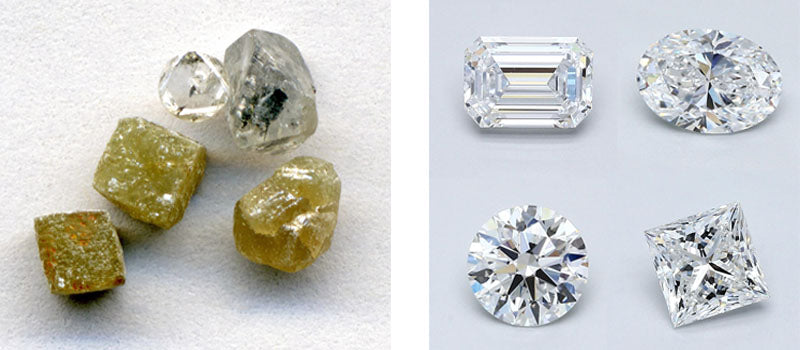You know the saying, "not all hot tubs are Jacuzzis, but all Jacuzzis are hot tubs"? The same goes for conflict diamonds and blood diamonds.
An abridged history
The term 'blood diamond' came to be in the 1990s when brutal civil wars in Central and Western Africa garnered global attention.
Rebel groups funded their military operations through exploitation and violence in diamond-rich areas where local mining communities were often individuals and small groups. Rough diamonds were sold to merchants or smuggled out of conflict zones, eventually entering the supply chain with legitimately mined diamonds.
The Kimberly Process (KP) was created in 2003 as a countermeasure to end the blood diamond trade and assure the public their jewelry wasn't funding rebel groups. At its peak, an estimated 15% of diamonds in the global trade were blood diamonds. By 2010, that figure dropped to less than 1 percent.
Key definitions
Blood diamond: any diamond mined in areas controlled by forces opposed to the legitimate, internationally recognized government of a country and sold to fund military action against that government. (United Nations)
Kimberly Process (KP): an international, multi-stakeholder trade regime created in 2003 to increase transparency and oversight in the diamond supply chain in order to eliminate trade in conflict diamonds, defined as rough diamonds sold by rebel groups or their allies to fund conflict against legitimate governments. (U.S. Department of State)

The takeaway
The Kimberly Process started as a solution to a singular dire problem. It was never meant to address the diamond supply chain as a whole, and what's icky is that some in the jewelry industry mislead consumers into thinking it does.
The certification scheme does not address child labor, human rights abuses, environmental degradation, or what happens to rough diamonds after they're sold.
Consumer best practices
Certifications can help shoppers make informed and confident decisions, but understanding the mission behind any certification is essential. As we've learned above, a KP-certified diamond can still be a conflict diamond.
So what should you do? Knowledge is power and search engines are your friend. Look up definitions for words that keep popping up while you shop. Go directly to a certification's website to learn about their process.
Beware of ethics washing and greenwashing—the world is a complicated place and supply chains aren't perfect. Marketers can do a scary-good job diverting our attention away from reality. Find a jeweler that aligns with your core values and get to know them if you can (direct message on social media or email via a contact page).
This may sound silly, but sometimes you gotta trust your gut. If something sounds too good to be true, it probably is. A business that genuinely cares about its impact prioritizes transparency in communications and will gladly discuss business practices if you reach out.
How I source my diamonds
First and foremost, I avoid sourcing newly mined natural diamonds. Reclaimed natural diamonds—also called secondhand diamonds or recycled diamonds—align with my goal to limit impact on the planet, people and animals.
Additionally, I'm open to using lab-grown diamonds in my work, especially if a client requests one for an engagement ring. I prioritize sourcing from growers who are SCS Global Services certified for sustainability.
Check out my FAQ page to learn more about my sourcing practices and any certifications associated with my suppliers.













